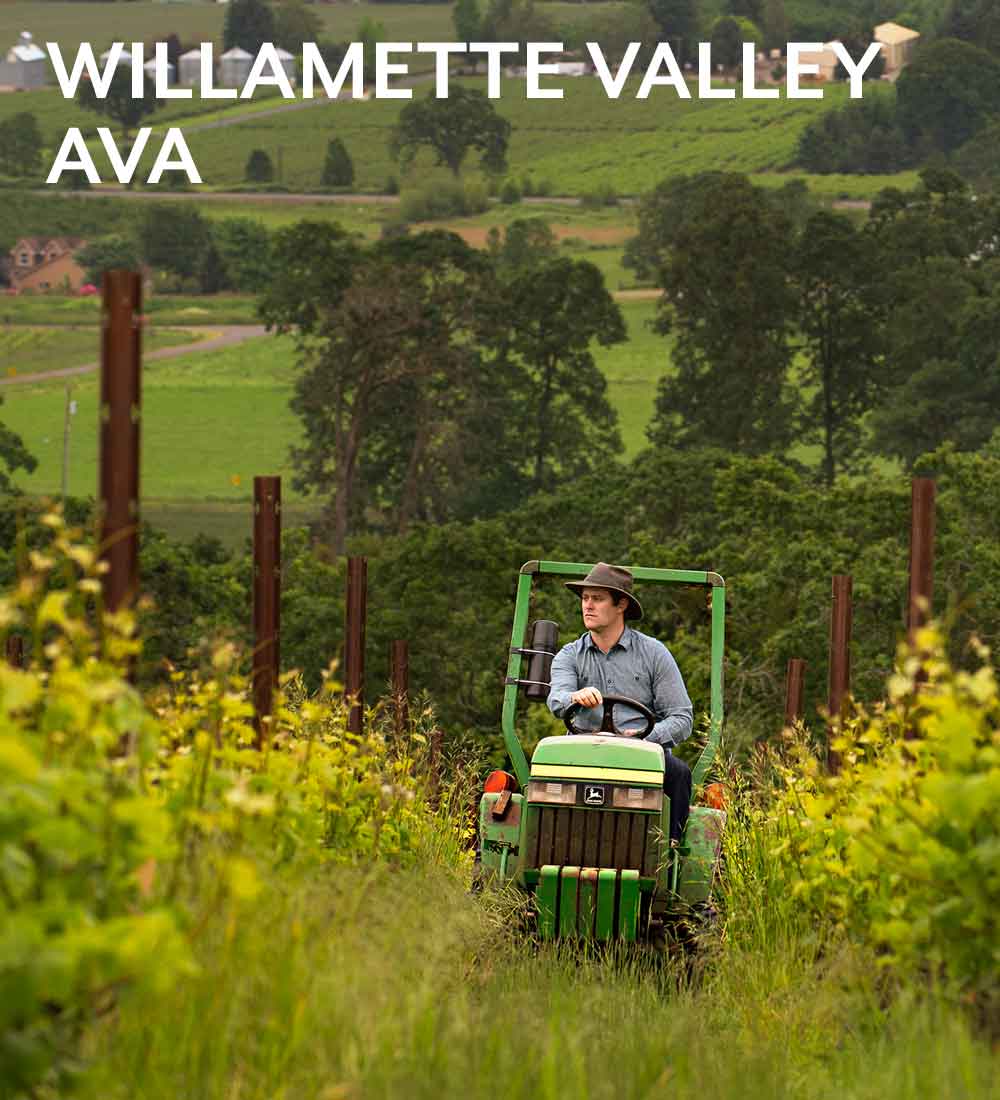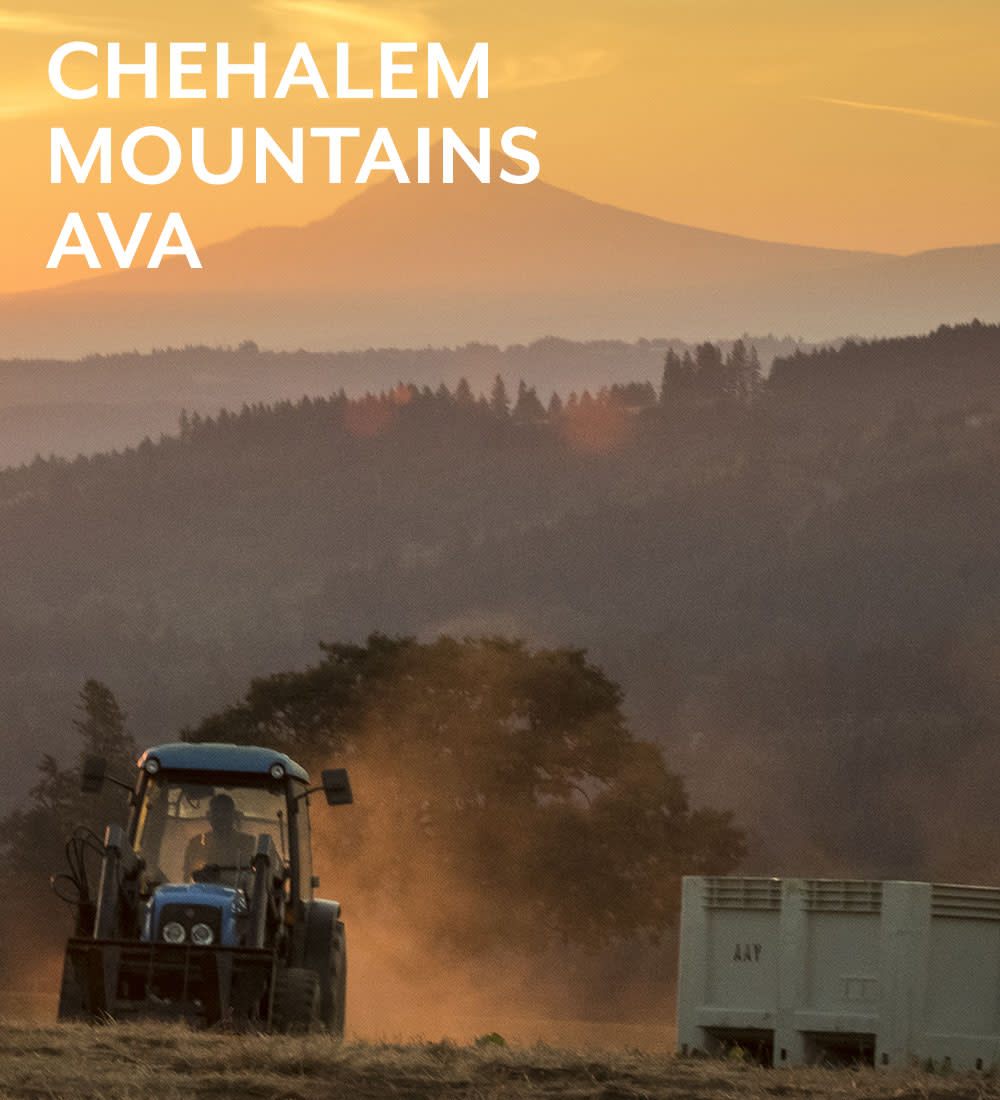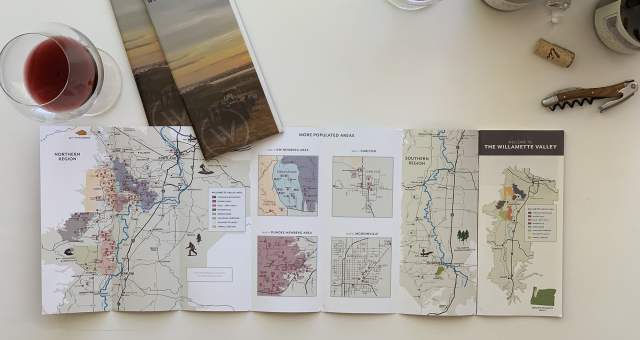Willamette Valley AVAS
No grape variety is as reflective of climatic and site differences as Pinot noir. That is why it demands a cool climate to thrive and why small distance differences in the valley often yield wines of distinctively different character. General attributes that make the Willamette Valley suitable for cool climate grape growing include the protection afforded by the Cascade Mountains to the east, Coast Range mountains to the west and a series of lower hill chains to the extreme north of the valley. Almost all grape growing is done on lower hillsides, avoiding deeply fertile alluvial soils and cooler hilltop mesoclimates.
It is on these hillsides that Pinot noir uniqueness is found and where apparent families of wines urge distinctive American Viticultural Area identification. In 2002, a collaborative action of vineyards and wineries delineated and submitted to the TTB petitions to divide much of the northern part of the large Willamette Valley AVA into six more specific AVAs: Chehalem Mountains, Dundee Hills, Eola-Amity Hills, McMinnville, Ribbon Ridge, and Yamhill-Carlton. The Van Duzer Corridor AVA went into effect in January 2019, the Tualatin Hills and Laurelwood District AVAs were approved in June 2020, and the Lower Long Tom AVA was established in November 2021. Mount Pisgah, Polk County, Oregon was established in June 2022.
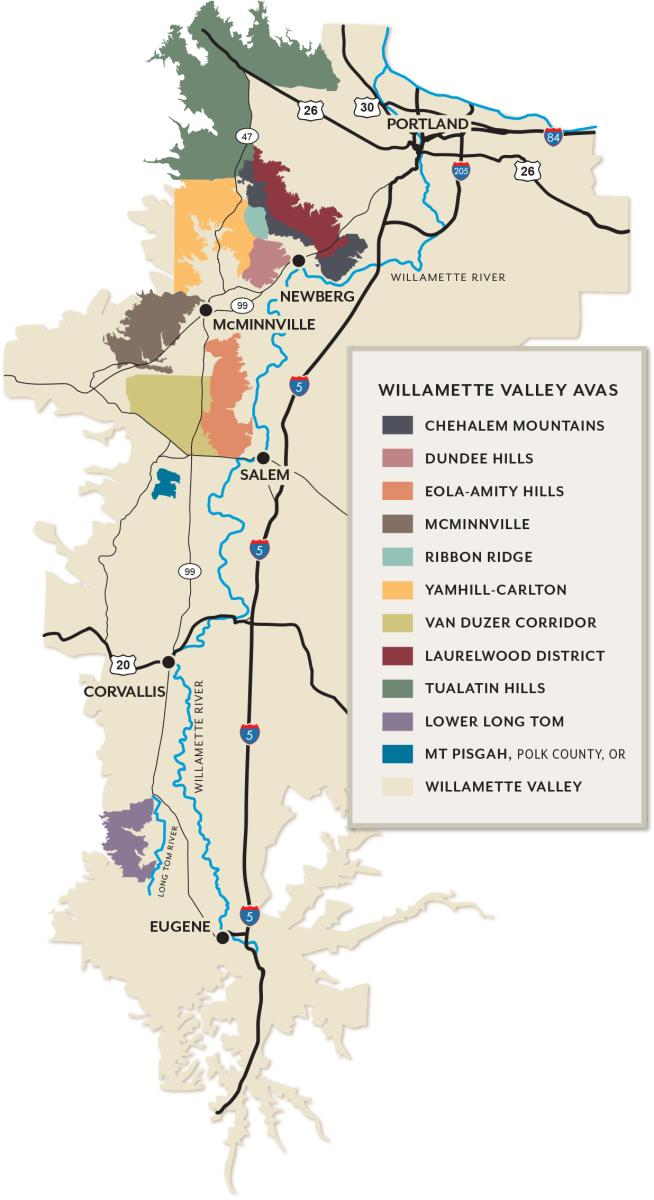
WILLAMETTE VALLEY EST. 1983
A large AVA of 3,438,000 acres (5372 square miles), running from Portland in the north to Eugene in the south, it includes rich alluvial soils on the valley floor, that are great for agriculture but inappropriate for high quality grapegrowing, and a selection of volcanic, loess and sedimentary soils on hillsides of varying mesoclimates.
CHEHALEM MOUNTAINS AVA EST. 2006
The Chehalem Mountains AVA is a single uplifted landmass southwest of Portland in the northern Willamette Valley, extending 20 miles in length and 5 miles in breadth, stretching from southeast to northwest. It includes several discrete spurs, mountains and ridges, such as Ribbon Ridge and Parrett Mountain.
DUNDEE HILLS AVA EST. 2005
The first grapes in the Willamette Valley were planted in the Dundee Hills, and it remains the most densely planted locale in the valley and state.
EOLA-AMITY HILLS EST. 2006
Two of the predominant influences on the characteristics of wines from the Eola-Amity Hills are shallow soils and the Van Duzer Corridor. The soils of the Eola-Amity Hills contain predominantly volcanic basalt from ancient lava flows, combined with marine sedimentary rocks and/or alluvial deposits, making a generally much shallower and rockier set of well-drained soils which produce small grapes with great concentration.
LAURELWOOD DISTRICT EST. 2020
The Laurelwood District AVA, one of Oregon's newest AVAs, was approved in June 2020. Principals from Ponzi Vineyards and Dion Vineyards championed its petition. This AVA, which is nested within the Chehalem Mountains AVA, comprises more than 25 wineries and 70 vineyards.

LOWER LONG TOM EST. 2021
Established in November 2021, the Lower Long Tom AVA sits within the west side of the Lower Long Tom Watershed, between Corvallis and Eugene. Its 24 vineyards are located on stream-cut ridge lines running east to west, with Bellpine as the predominant soil type.

MCMINNVILLE EST. 2005
The McMinnville AVA of nearly 40,500 acres sits due west of Yamhill County’s seat, the city of McMinnville. It extends approximately 20 miles south-southwest toward the mouth of the Van Duzer Corridor, Oregon’s lowest coast range pass to the Pacific Ocean.
MOUNT PISGAH, POLK COUNTY, OREGON EST. 2022
Mt. Pisgah, Polk County, Oregon is the Valley’s second-smallest AVA but one of its most densely planted. The pioneering work of the Freedom Hill Vineyard enabled 10 other vineyards to spring up in the past 40 years, taking advantage of the warmth near the Willamette, the mild influence of the Van Duzer winds, and the rain shadow of Laurel Mountain to the west.
RIBBON RIDGE EST. 2005
The AVA is distinguished by uniform, unique ocean sedimentary soils and a geography that is protected climatically by the larger landmasses surrounding it. Paucity of aquifers forces most vineyards to be dry farmed. Ribbon Ridge is contained within the larger Chehalem Mountains AVA.
TUALATIN HILLS EST. 2020
This 15-mile slice is tucked into the northwesternmost corner of the Willamette Valley and is home to the very first commercial vineyard in Oregon, with a long agricultural history.
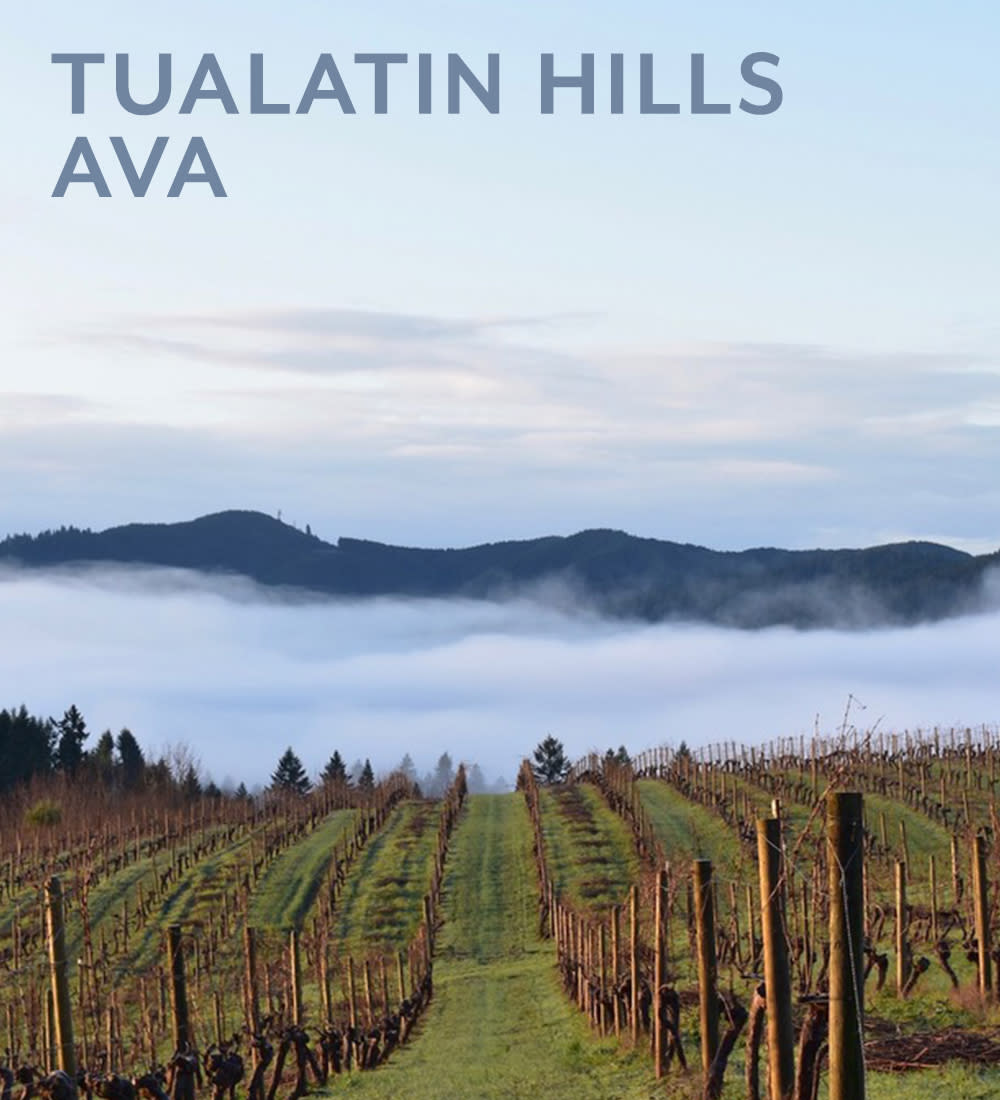
VAN DUZER CORRIDOR EST. 2019
The Van Duzer Corridor is an anomaly in the Coast Range through which oceanic winds funnel into the Valley, creating a cooling effect that occurs as early as 2:00 in the afternoon. This breeze dries out the vine canopy and decreases fungus pressure, making the area highly attractive for grape growing and supporting sustainable practices by drastically reducing the need for fungus spray. As a phenomenon of wind protection, the grape skins thicken, leading to an abundance of anthocyanins (color) and tannin.
YAMHILL-CARLTON EST. 2005
North of McMinnville, the foothills of the Coast Range create an AVA of nearly 60,000 acres, centered around the hamlets of Carlton and Yamhill.

